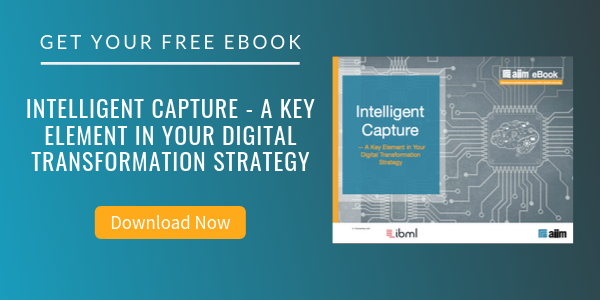
8 Things to Consider in Selecting the Right Scanner
-
Scanning speed
The most common question that gets asked during the sales process for a scanner is, "How fast is it?" Almost everyone thinks that the higher the speed of the scanner, the higher the output. The fact is, this is not always the case.
Beyond a certain level, the scanner will be idle due to the inability to feed documents at that speed. This is especially true when scanning mixed documents, where it becomes impossible to use the scanner to full speed.
The scanning speed is measured either in ppm (pages per minute) for simplex scanners or ipm (images per minute) for duplex scanners. Today, there are scanners ranging from 20 ppm to 200 ppm.
Unless the purchaser is an internal or external service bureau (or a similar operation of scanning very high volumes of the same document type), the lower speed ranges are likely sufficient for many.
-
Document size (maximum & minimum)
One of the main factors that determine the price of a scanner is the maximum size of a document that can be scanned.
Generally, there are scanners which can scan either up to:
- A4 / legal
- A3
- Larger than A3
Most of the documents that we get are either in A4 or legal size. But in practice, I prefer to go for an A3 scanner since there are many non-standard size documents.
Important to note, there are few scanners that can scan extra-long documents.
-
Feeder vs. Flatbed
Production scanners come either with the Auto feeder only or with the flatbed. Some new scanner models have a detachable flatbed, which could be very ergonomic, depending on the work layout.
A flatbed is required if you need to scan bound documents, books, or fragile or very delicate documents, as well as files without separating papers.
A flatbed may also be required if you need to scan legal documents, such as contracts or deeds, since these come in double legal size and cannot be separated.
-
Simplex vs. Duplex
Most of today’s scanners are duplex, meaning that it can scan both sides of the document at the same time. Unless you are going to scan single-sided documents exclusively, it is always better to go for a duplex scanner.
-
Scanning Mode - Color vs. Black & White
There are three main output formats in document scanning:
- Black & white / bitonal
- Grayscale
- Color
Most of today's scanners can scan in all three formats. However, there could be models that do not support color scanning. There are some scanners that support dual-stream outputs. That is, it can scan a color document and save two images in two formats at the same time (e.g., black & white and color).
-
Resolution (Optical & Output)
When it comes to selecting a scanner (especially for high-quality scanning), the resolution is a primary factor. There are two resolutions to consider:
Optical resolution: This represents the actual scanning resolution the scanner is capable of scanning. So this is the important measurement.
Output resolution: This is the enhanced or maximum resolution that the scanner can produce using interpolation. Output resolution is always greater than the optical resolution. It doesn't add more resolution; it just enlarges the image by adding extra pixels artificially. This is not as important a measurement as the optical resolution.
-
Drivers and Capture Software
Any of today’s scanner comes bundled with one or several scanning applications and drivers. There are a few things to consider here.
Drivers: there are two main sets of drivers, Twain and ISIS. Twain is an open and freely available set of drivers intended for consumer-level scanners. ISIS is a proprietary standard recommended for high-speed production scanners. Most of the scanners support both drivers. However, if you intend to use a separate specialized capture application instead of the one that comes with the scanner, you need to check on the driver compatibility.
Output formats: The combination of the scanner and the capture application will decide what file types (TIFF, PDF, PDF/A, etc.) can be produced.
Image enhancements: There are interesting and useful image enhancement features associated with different scanners.
File saving options: Different scanners have different features on saving the scanned image, such as the ability to directly scan into SharePoint.
-
Specialized Scanners and Accessories
The last area to consider is whether you need specialized scanners such as:
- Large format/high precision scanners
- Specialized book scanners
- Mobile scanners
- Networked scanners
- Check scanners /MICR readers
- High speed – high capacity
About John Mancini
John Mancini is the President of Content Results, LLC and the Past President of AIIM. He is a well-known author, speaker, and advisor on information management, digital transformation and intelligent automation. John is a frequent keynote speaker and author of more than 30 eBooks on a variety of topics. He can be found on Twitter, LinkedIn and Facebook as jmancini77. Recent keynote topics include: The Stairway to Digital Transformation Navigating Disruptive Waters — 4 Things You Need to Know to Build Your Digital Transformation Strategy Getting Ahead of the Digital Transformation Curve Viewing Information Management Through a New Lens Digital Disruption: 6 Strategies to Avoid Being “Blockbustered” Specialties: Keynote speaker and writer on AI, RPA, intelligent Information Management, Intelligent Automation and Digital Transformation. Consensus-building with Boards to create strategic focus, action, and accountability. Extensive public speaking and public relations work Conversant and experienced in major technology issues and trends. Expert on inbound and content marketing, particularly in an association environment and on the Hubspot platform. John is a Phi Beta Kappa graduate of the College of William and Mary, and holds an M.A. in Public Policy from the Woodrow Wilson School at Princeton University.



